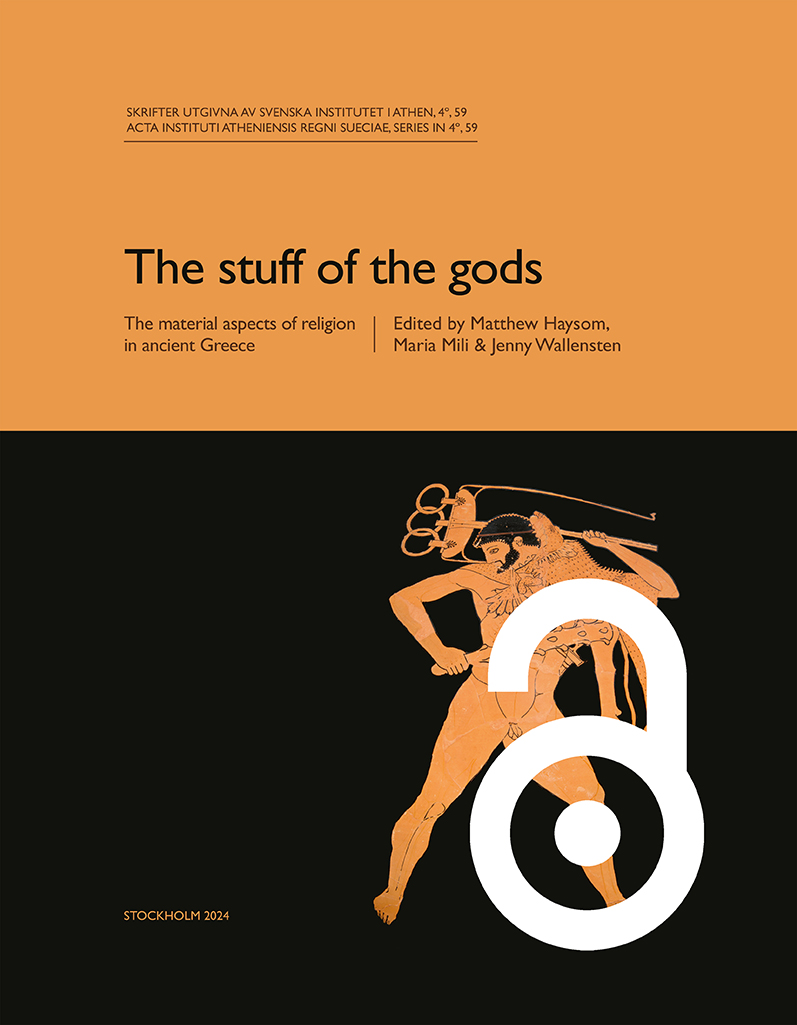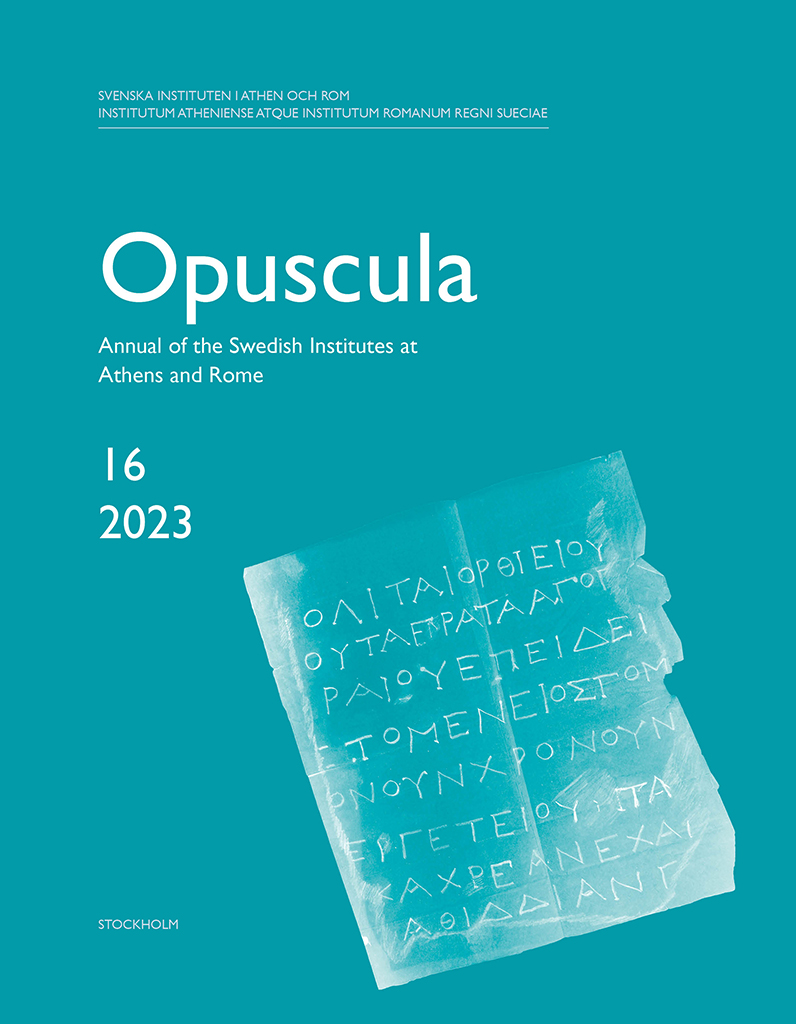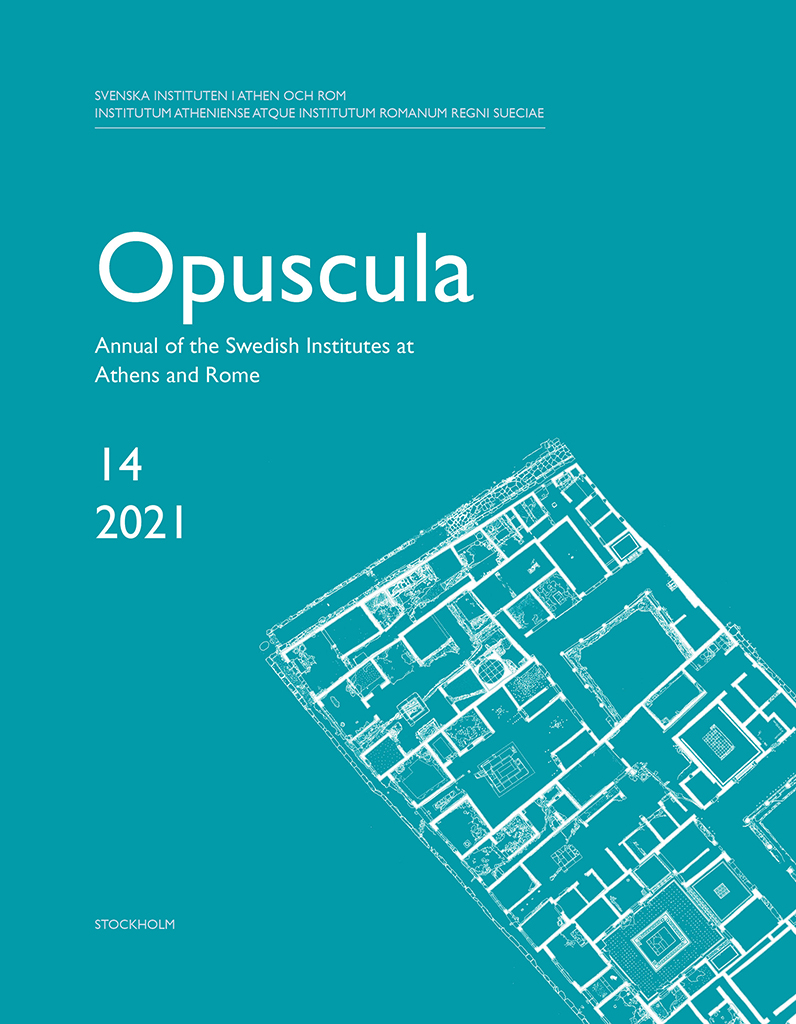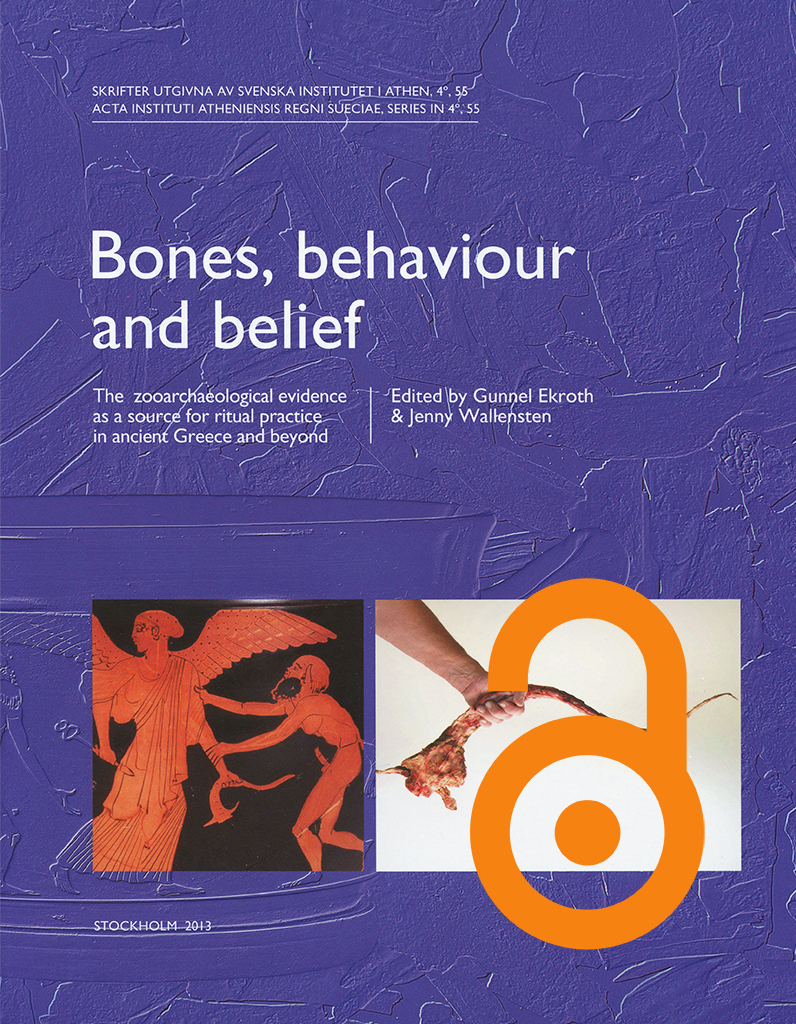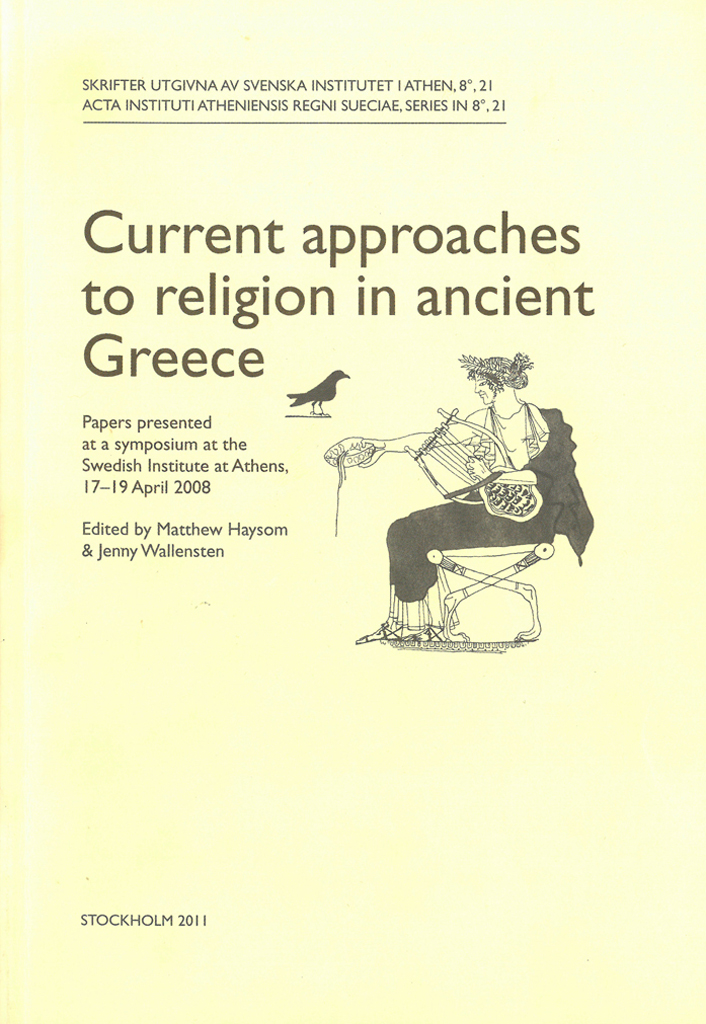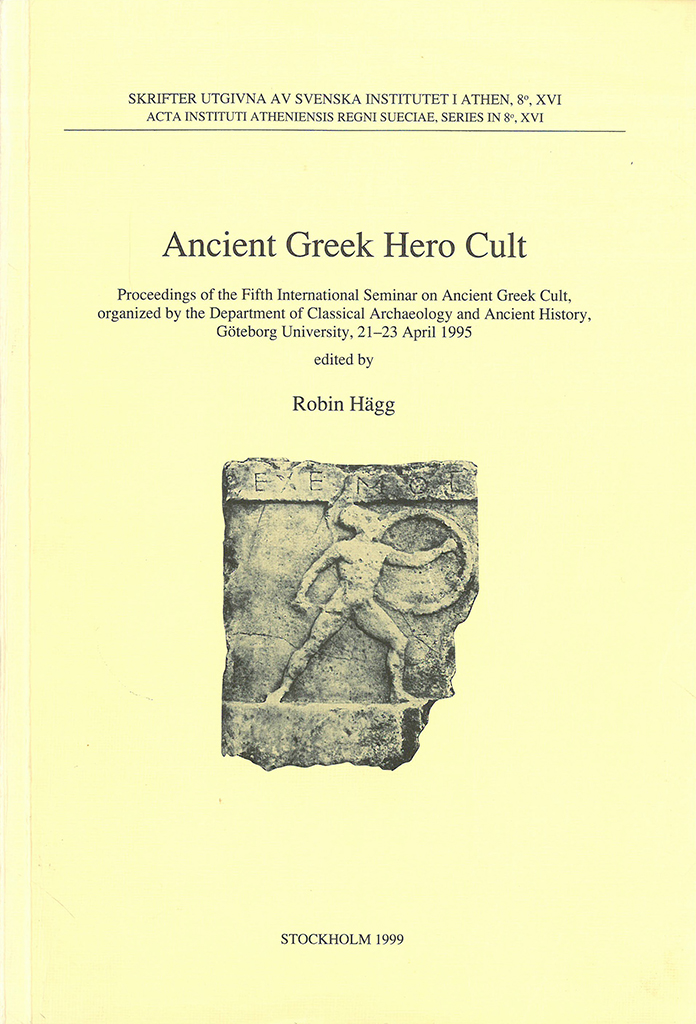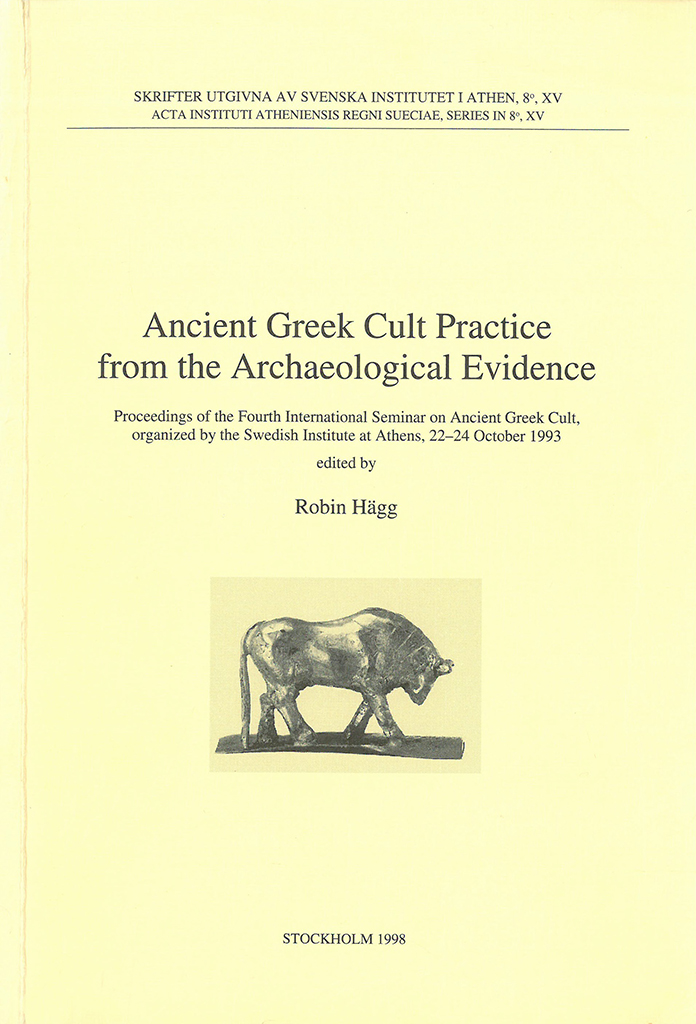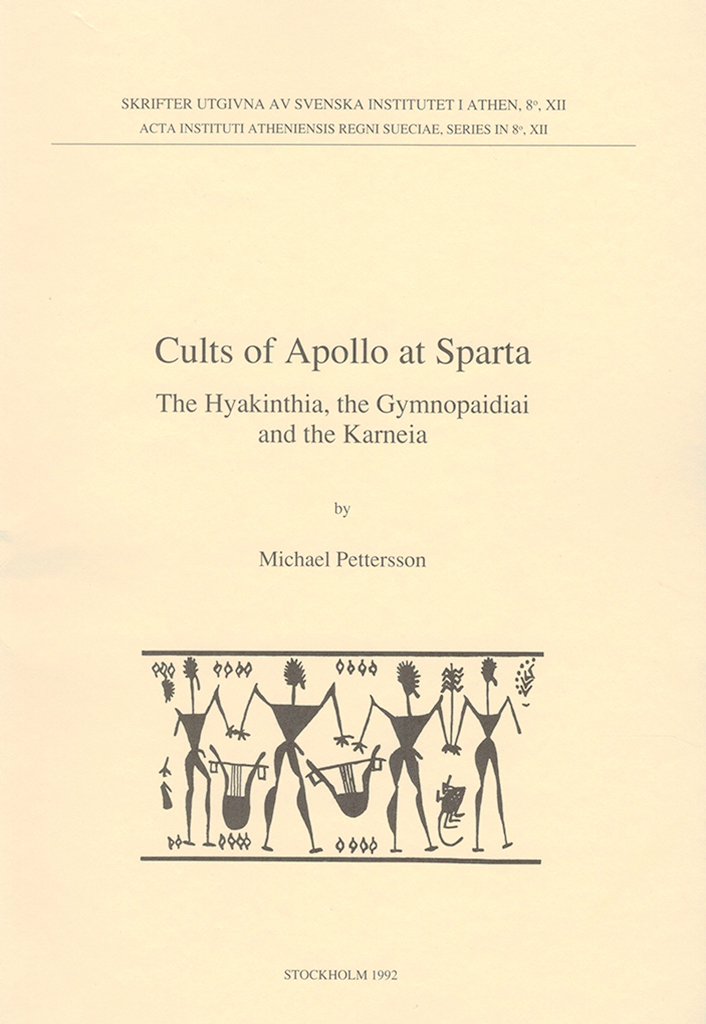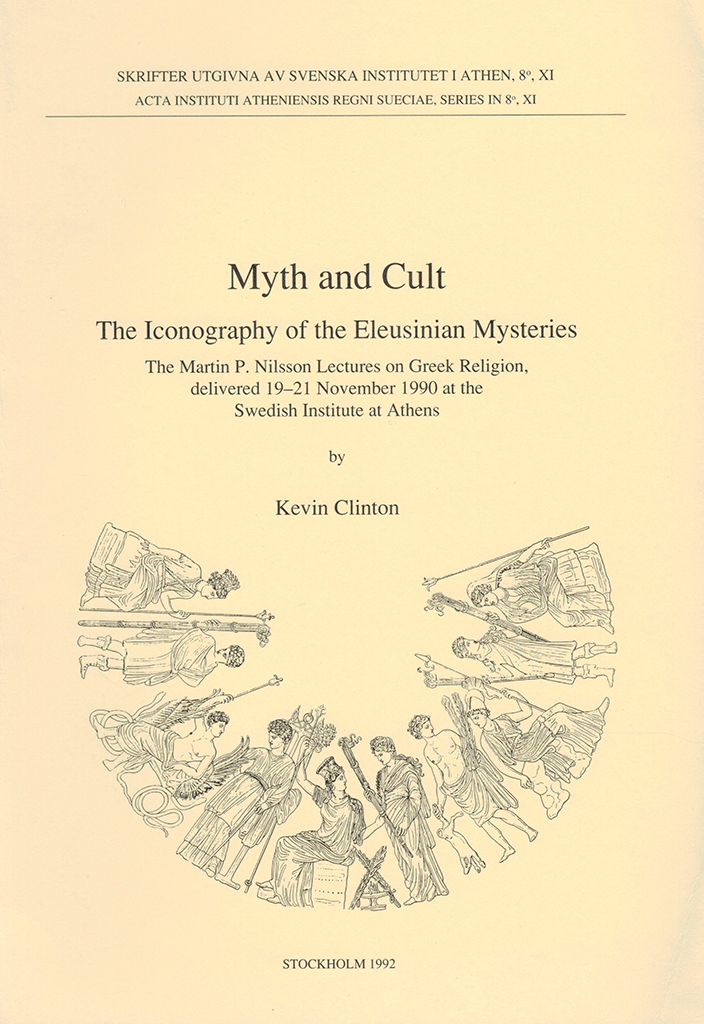Published by the Swedish Institute at Athens. Distributed by Eddy.se AB. All content is available with open access, use links below. The stuff of the gods. The material aspects of religion in ancient Greece Edited by Matthew Haysom, Maria Mili & Jenny Wallensten https://doi.org/10.30549/actaath-4-59 The “material turn” in the humanities and social sciences has brought about an expanded understanding of the material dimension of all cultural and social phenomena. In the Classics it has resulted in the breaking down of boundaries within the discipline and a growing interest in materiality within literature. In the study of religion cross-culturally new perspectives are emphasising religion as a material phenomenon and belief as a practice founded in the material world. This volume brings together experts in all aspects of Greek religion to consider its material dimensions. Chapters cover both themes traditionally approached by archaeologists, such as dedications and sacred space, and themes traditionally approached by philologists, such as the role of objects in divine power. They include a wide variety of themes ranging from the imminent material experience of religion for ancient Greek worshippers to the role of material culture in change and continuity over the long term. Chapter abstracts and author affiliations…
Opuscula is published by the Swedish Institutes at Athens and Rome, with the aid of a grant from the Swedish Research Council. Distributed by Eddy.se AB. View journal at ERIH PLUS. All content available with open access. Statuettes of pregnant sows from Knidos. New light on the cult of Demeter By Linda Talatas Abstract Four marble statuettes of pregnant swine were found in the sanctuary of Demeter at Knidos over 160 years ago, but have been largely overlooked in previous research, even though the connection between pigs and Demeter has long caught the attention of scholars, especially in relation to the piglets required for the celebration of her Eleusinian Mysteries. The statuettes raise several questions. Why make sculptures of pregnant sows? Who dedicated those offerings, and in what context? Are they related to the sacrifice of pregnant sows? And ultimately, why pregnant sows for Demeter? The article starts with a presentation of the four marble sows from the sanctuary of Demeter at Knidos, followed by a more general examination of the archaeological evidence for pig, piglet, and pregnant sow representations at Greek sanctuaries. I will then explore the epigraphical evidence for pregnant sow sacrifices, all of which is in connection…
Opuscula is published by the Swedish Institutes at Athens and Rome, with the aid of a grant from the Swedish Research Council. Distributed by Eddy.se AB. View journal at ERIH PLUS. All content available with open access. The key to Hermione? Notes on an inscribed monument By Jenny Wallensten (Swedish Institute at Athens, Greece) Abstract This article discusses an inscribed monument found during rescue excavations in the ancient city of Hermione. It provides an editio princeps for the one-word inscription and discusses the symbolism of its relief depiction of a temple key. The examination of the monument is followed by a discussion proposing a new perspective on how to approach the religious milieu of ancient Hermione. Bibliographical information Jenny Wallensten, ’The key to Hermione? Notes on an inscribed monument’, Opuscula. Annual of the Swedish Institutes at Athens and Rome (OpAthRom) 14, Stockholm 2021, 169-180. ISSN: 2000-0898. ISBN: 978-91-977799-3-7. Softcover, 478 pages. https://doi.org/10.30549/opathrom-14-10 Hermione. A Greek cityscape and its people The section on Hermione, published in OpAthRom 14, comprises six articles: Alcestis Papadimitriou | An ancient cityscape and its people: A study of ancient Hermione. Introductory remarks on historical sources and visible remains, archaeological research and prospects (pp. 65-76) Henrik Gerding | The topography of Hermione—A preliminary…
Published by the Swedish Institute at Athens. Distributed by Eddy.se AB. All content is available with open access, use links below. Bones, behaviour and belief. The zooarchaeological evidence as a source for ritual practice in ancient Greece and beyond Edited by Gunnel Ekroth & Jenny Wallensten https://doi.org/10.30549/actaath-4-55 Abstract The importance of the zooarchaeological evidence as a source for ritual practices in ancient Greece is gradually becoming widely recognized. Animal bones form the only category of evidence for Greek cult which is constantly significantly increasing, and they can complement and elucidate the information provided by texts, inscriptions and images. This volume brings together sixteen contributions exploring ritual practices and animal bones from different chronological and geographical perspectives, foremost ancient Greece in the historical period, but also in the Bronze Age and as early as the Neolithic period, as well as Anatolia, France and Scandinavia, providing new empirical evidence from a number of major sanctuaries and cult-places. On a methodological level, the complexity of identifying ritual activity from the zooarchaeological evidence is a recurrent theme, as is the prominence of local variation visible in the bone material, suggesting that the written sources and iconography may offer simplified or idealized versions of the…
Published by the Swedish Institute at Athens. Distributed by Eddy.se AB. Current approaches to religion in ancient Greece. Papers presented at a symposium at the Swedish Institute at Athens, 17–19 April 2008 By Matthew Haysom & Jenny Wallensten, eds Abstract In recent years Greek religion has emerged as one of the main topics for the study of ancient Greek society as a whole. This flourishing interest is certainly due to the recognition of the centrality of religion to Greek culture: religious beliefs and practices were connected to almost every aspect of the Greek world. This volume brings together fourteen contributions from a group of upcoming international scholars, presented at a conference held in the Swedish Institute at Athens and the British School at Athens in 2008. The papers take a wide range of approaches: archaeological, epigraphic, iconographical, philological and historical. They demonstrate the diversity of the subject, covering such issues as nineteenth-century historiography, cult epithets, the pantheon, regionalism, polis religion, the performance of ritual, the use of music in ritual, the accessibility of sacred space, and the visual aspects of dedications. The contributions bring new theoretical perspectives, seek to better understand ritual, and highlight the variety of Greek religion. Contents…
Published by the Swedish Institute at Athens. Distributed by Astrom Editions. Ancient Greek hero cult. Proceedings of the Fifth International Seminar on Ancient Greek Cult, organized by the Department of Classical Archaeology and Ancient History, Göteborg University, 21–23 April 1995 Edited by Robin Hägg Abstract A collection of twelve papers, read at an international seminar in Göteborg, that deal with various phenomena of the ancient Greek hero cult, based on literary, iconographical and archaeological evidence. Among the special topics discussed are the hero cults in Early Iron Age Greece, the relationship between funerary ritual, the veneration of ancestors and the cult of heros, the Danaides of Argos as “ancestors”, the multilocality of heroes, patriotic heroes, the politics of the transferal of the bones of heros, the position of the Dioskouroi as Laconian heroes worshipped also in Attica, the origins of Greek hero cult in the context of overseas foundations, the heroon of Asclepius in Athens, the sacrificial rituals of Greek hero cults in Pausanias, the hero Melikertes-Palaimon at Isthmia, and the development of hero cults in the Hellenistic and Roman periods. Contents Preface (p. 7) Alexander Mazarakis Ainian | Reflections on hero cults in Early Iron Age Greece (pp. 9–36)…
Published by the Swedish Institute at Athens. Distributed by Astrom Editions. Ancient Greek cult practice from the archaeological evidence. Proceedings of the Fourth International Seminar on Ancient Greek Cult, organized by the Swedish Institute at Athens, 22–24 October 1993 Edited by Robin Hägg Abstract A collection of thirteen papers, read at an international seminar in Athens, that deal with various phenomena of Greek cult practice, analyzing the information gained from the archaeological evidence. Among the special topics discussed are cult practice in the acropolis sanctuary of Minoa on Amorgos, the sanctuaries in the Artemision of Ephesos, the role played by osteological analysis in the understanding of Greek sacrificial practice, the interpretation of animal bones and fire traces connected with ritual feasting in the Herakleion on Thasos, ritual and society in Early Iron Age Corinthia, small dedications from the Archaic temple of Poseidon at Isthmia, altars in Greek hero cults, the early history of the sanctuary of Demeter and Kore at Eleusis, a sacrificial area near the sanctuary of Apollo Daphnephoros at Eretria, terracotta plaques and other finds from the sanctuary of Demeter and the Dioscouri at Messene, the interpretation of sickles in Greek sanctuaries, changes in votive practice from Classical…
Published by the Swedish Institute at Athens. Distributed by Astrom Editions. The role of religion in the early Greek polis. Proceedings of the Third International Seminar on Ancient Greek Cult, organized by the Swedish Institute at Athens, 16–18 October 1992 Edited by Robin Hägg Abstract These twelve papers read at an international seminar in Athens deal with various aspects of the role of religion in the early Greek polis, based on the epigraphical, iconographical and archaeological evidence. Among the special topics discussed are territorial myths and the mythical articulations with regard to the early polis, the Greek temple-builders, the distribution of offerings and rituals between graves and sanctuaries, the development of sacred and profane civic ideology in Athens, processions (pompai), verbal and ritual obscenity in women’s cults, prohibitionary inscriptions, the role of the seer, the Thesmophorion in central Athens, the cults in Solonian Athens, cults by the seashore and Dionysos at Argos. Contents Preface (p. 7) Irad Malkin | The polis between myths of land and territory (pp. 9–19) Walter Burkert | Greek temple builders: who, where and why? (pp. 21–29) François de Polignac | Entre les dieux et les morts. Statut individual et rites collectifs dans la cite archaïque…
Published by the Swedish Institute at Athens. Distributed by Astrom Editions. Cults of Apollo at Sparta. The Hyakinthia, the Gymnopaidiai and the Karneia By Michael Pettersson Abstract In this study, the three cults of Apollo are regarded as a rite of passage. In the first three chapters, the evidence concerning each cult is reviewed and discussed. The two-part structure of the Hyakinthia is investigated as an expression of the cult as a rite of passage. The identity of Hyakinthos is analyzed, starting with Pausanias’ description of the altar at the Amyklaion from the sixth century BC. It is argued that the bearded Hyakinthos, depicted on one relief, indicated a mature man and not the youth who was loved by Apollo, while the scene with Hyakinthos and Polyboia was associated with female initiation. Hyakinthos is presented as an ancestral figure, whose death was commemorated as part of a rite of initiation. The Gymnopaidiai was chiefly connected with the performances of choruses. The role of choreia in Spartan culture and religion is examined. The nakedness of the participants in this cult is viewed as a symbolic expression of the liminal stage which the initiands went through. The Karneia is regarded as the…
Published by the Swedish Institute at Athens. Distributed by Astrom Editions. Myth and cult. The iconography of the Eleusinian Mysteries. The Martin P. Nilsson Lectures on Greek Religion, delivered 19–21 November 1990 at the Swedish Institute at Athens By Kevin Clinton Abstract Iconography serves as the starting part for the treatment of central aspects of the myth and cult of the Eleusinian Mysteries. The presence of the Mirthless Rock in artistic presentations, its location in the sanctuary, and its relation to the Callichoron Well provide a perspective for assessing the aetiological elements in the Homeric Hymn to Demeter and the relation of the Hymn to Eleusis. The Iconography of Eubouleus, Iakchos, and Eumolpos is established, and that of Triptolemos and Ploutos is discussed extensively. The importance of Eubouleus in artistic representations is seen to correspond to his importance in the Mysteries, and the identification of him in certain scenes reveals his function in the myth of the Mysteries. Discussion of his role in the Thesmophoria leads to an examination of the relation of the Mysteries to the Thesmophoria. The various roles of all these figures in artistic representations provide a basis for revised interpretations of several works of art, and…

